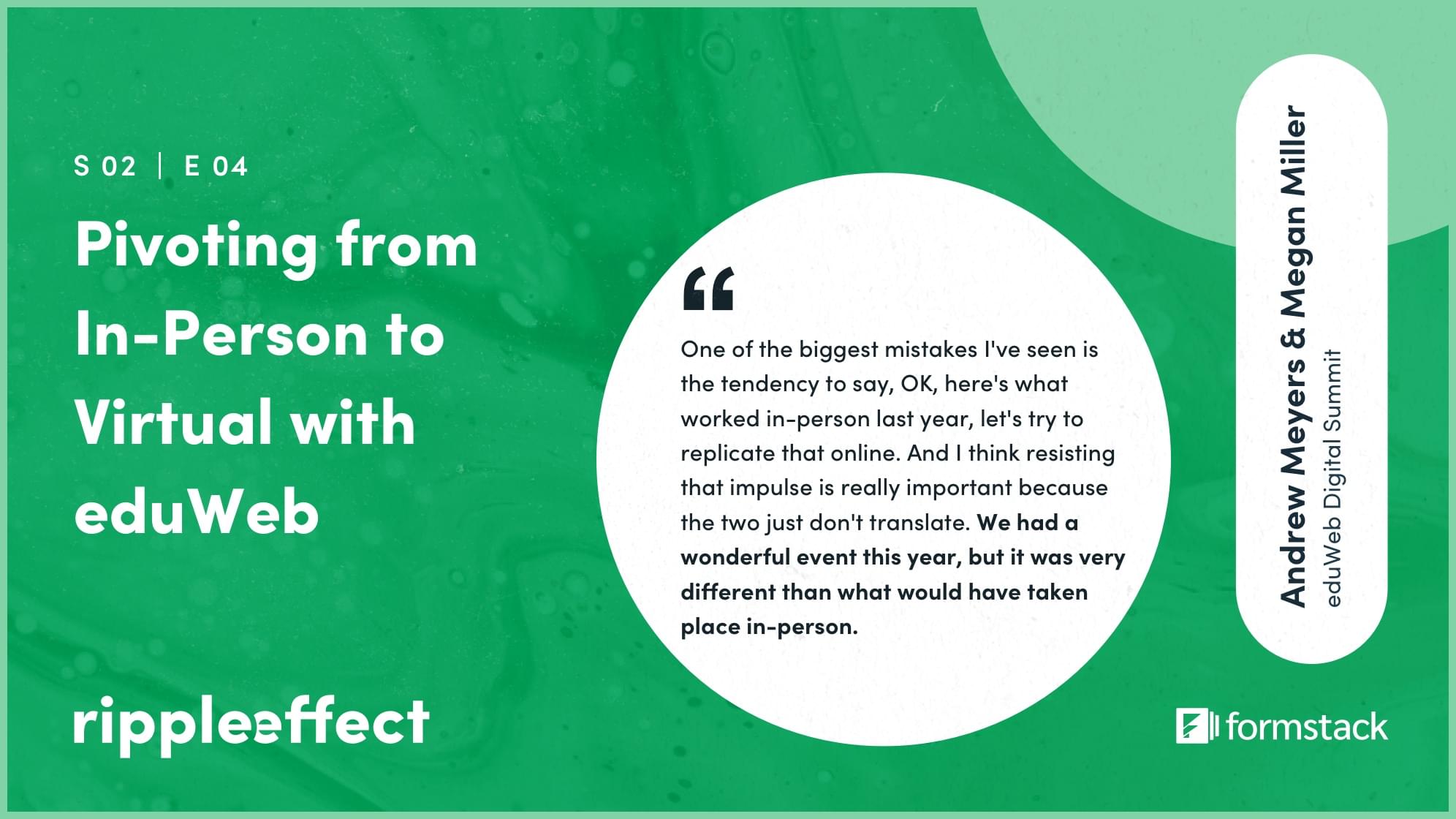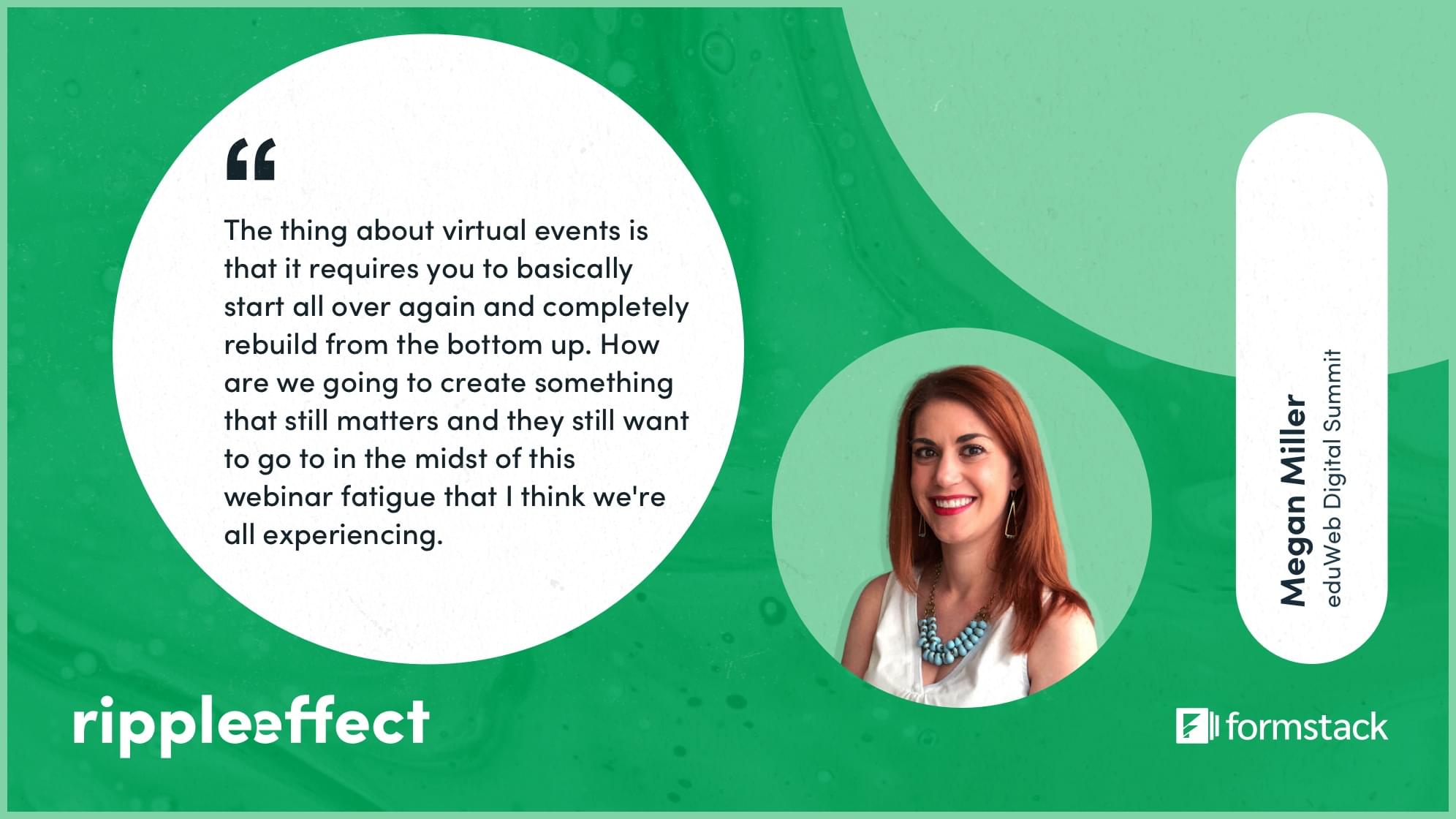As with almost everything in 2020, those who work in events have had to reimagine how they do work—trying new processes, formats, and technology to accomplish their goals this year.
For anyone who has planned, hosted, or attended a virtual event in 2020, there have been a lot of learnings on what works—and what doesn’t.
Although many of us have been living in an almost completely virtual world for nearly nine months, it still feels strange at times. Especially when it comes to attending virtual events that were never meant to be virtual.
If you’re planning a virtual event, you’ll want to check out the tips below. Whether it’s a large meeting, networking event, conference, or team-building activity, these virtual event tips will help you avoid the common pitfalls that can make virtual meetings and events suck.
1. Spread Out the Content
This tip is one of the most important for those who are transitioning a previously in-person conference or large event into a virtual format. Don’t go into planning thinking that if your live event was eight hours, your virtual event should also be eight hours. What works for an in-person event doesn’t necessarily transfer to a virtual one.
On a recent episode of Formstack’s Ripple Effect podcast, Megan Miller and Andrew Meyers of eduWeb Digital Summit joined us to chat about what they’ve learned about virtual event planning. The tip above was one they strongly emphasized during the discussion.

Consider breaking up your event across several days, instead of cramming it into a long, one-day event. If your in-person event was eight hours long, you could break it up into multiple two-hour events across four days. Or you could offer two different two-hour events across two days. Structure your event and content according to what makes sense to your theme, audience, and agenda.
If your event is live and open to a national audience, this strategy will help ensure the schedule is accessible to more people. When the event is broken up into smaller chunks, it’s easier to find a time that can fit across time zones and work schedules.
2. Make It Interactive
Few people enjoy just staring at a screen for hours on end. If you want to pull off a successful online event, you need to make it interactive. This will cut down on the monotony of the screen and keep people engaged with your content.
Here are some ways to make your content interactive:
- Poll the audience
- Use the chat
- Ask questions
- Include trivia
- Play a quick game

Pro Tip: Engagement doesn’t have to come only from within your virtual platform. You can use a chat app like Slack or a social media platform like Twitter to keep conversations going and engagement high.
3. Allow for Breaks
Regardless of your event being two hours or eight, planning for breaks is important to keeping your audience satisfied. Zoom fatigue is real, and most people are having a hard time focusing for hours at a time.

You can schedule breaks or allow people to break off as they need. For less formal virtual events that may lean more on the social side, communicate with attendees that it’s perfectly fine for them to step aside for a restroom break or to grab a drink. For events that need a stricter schedule, try to include a 10–15 minute break about every two hours.
Read Next: 3 Best Practices for Hosting a Successful Virtual Event
4. Limit Individual Icebreakers
Efficiency is important for any type of event, but it’s crucial to delivering a great experience to virtual event attendees. Icebreakers can be a fun way to engage participants, but they need to be done strategically and efficiently.
If your group is larger than 20, you may want to skip an individual icebreaker. Hearing people answer the same icebreaker question over and over can quickly become boring and incredibly time consuming.
Instead, consider doing a quick poll, engaging in a group icebreaker, or facilitating the icebreaker portion in breakout rooms. This strategy will not only help you save time, but it will keep participants engaged and excited.
Related: 5 Lead Generation Ideas to Make Up for Canceled Events
5. Use Breakout Rooms
Creating smaller, more focused groups of participants is a great way to make any event feel more intimate and personal. If your video conferencing tool or video chat software allows you to create breakout rooms, definitely take advantage of that.
Using breakout rooms gives people a better way to connect with other attendees and makes activities more efficient and manageable. Many tools allow you to either randomize or select the breakout room participants, giving you the flexibility needed to adapt to whatever way you’re using the rooms.

Pro Tip: If doing an activity in breakout rooms, don’t provide too much time. If participants finish the activity early, things can get awkward, or people may get antsy. This is especially true when people don’t know each other.
Running a Successful Virtual Event
Whether you’re planning an online event for 30, 300, or 3,000 people, the tips above can help you plan a successful virtual event. If you take the time to be strategic and go into the process knowing the event will need to be different from anything you’ve done in-person, you’re bound to produce an engaging event.
Interested in learning how organizations have pivoted from in-person to online events? Listen to the Ripple Effect podcast episode Pivoting from In-Person to Virtual now to learn how eduWeb reimagined their completely in-person event with a 15-year history to a virtual conference.











